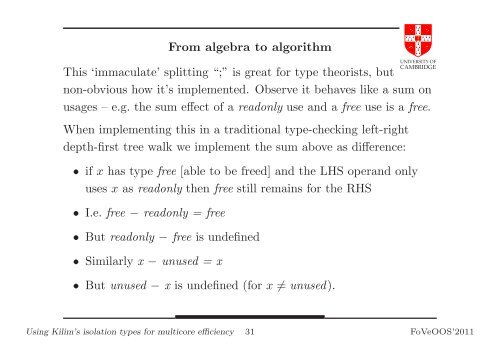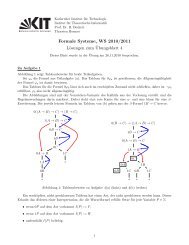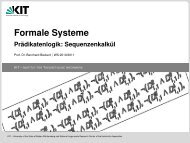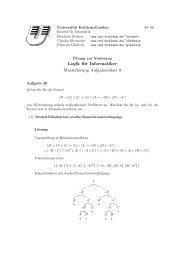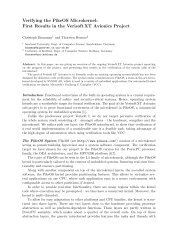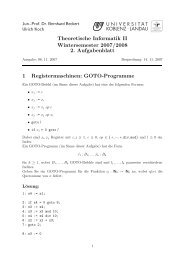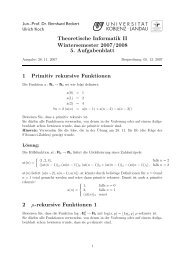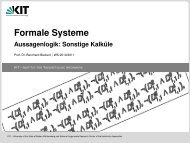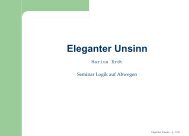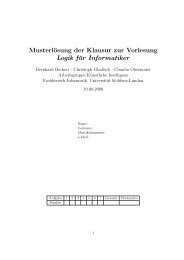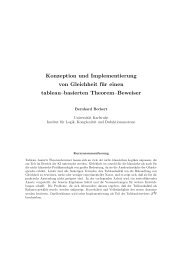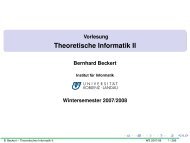Using Kilim's isolation types for multicore efficiency
Using Kilim's isolation types for multicore efficiency
Using Kilim's isolation types for multicore efficiency
You also want an ePaper? Increase the reach of your titles
YUMPU automatically turns print PDFs into web optimized ePapers that Google loves.
From algebra to algorithm<br />
UNIVERSITYOF<br />
CAMBRIDGE<br />
This ‘immaculate’ splitting “;” is great <strong>for</strong> type theorists, but<br />
non-obvious how it’s implemented. Observe it behaves like a sum on<br />
usages – e.g. the sum effect of a readonly use and a free use is a free.<br />
When implementing this in a traditional type-checking left-right<br />
depth-first tree walk we implement the sum above as difference:<br />
• if x has type free [able to be freed] and the LHS operand only<br />
uses x as readonly then free still remains <strong>for</strong> the RHS<br />
• I.e. free − readonly = free<br />
• But readonly − free is undefined<br />
• Similarly x − unused = x<br />
• But unused − x is undefined (<strong>for</strong> x = unused).<br />
<strong>Using</strong> Kilim’s <strong>isolation</strong> <strong>types</strong> <strong>for</strong> <strong>multicore</strong> <strong>efficiency</strong> 31 FoVeOOS’2011


